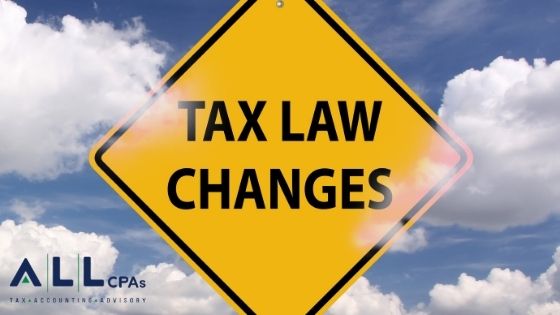
President Trump signed into law the $2 trillion coronavirus stimulus bill (the Coronavirus Aid, Relief and Economic Security Act (CARES Act)) on March 27. The CARES Act delivers assistance to workplaces and employees alike; provides benefits that are intended to deliver cash into the hands of businesses and individuals; and contains an array of additional tax provisions. A summary of CARES Act provisions is below.
INDIVIDUAL PROVISIONS
CASH REBATES
One of the most publicized portions of the law involves cash payments of $1,200 to individuals and $2,400 to married couples.
Under the CARES Act, an additional $500 may be paid for each qualifying child. These amounts are subject to reduction if the individual’s adjusted gross income (AGI) exceeds $75,000 ($150,000 for a married couple). Nonresident alien individuals and a person who is the dependent of another are ineligible to receive the payment.
The cash payments will be based on the recent tax information available to the IRS, based on the 2018 or 2019 tax return filed, but is subject to a “true-up” based on 2020 tax return information.
RETIREMENT FUNDS
The law makes significant changes to retirement plan payment and loan rules.
- Required minimum distribution rules for qualified plans and individual retirement accounts are suspended for 2020. This will avoid the plan having to sell plan assets when they may be at their lowest values.
- COVID-19-related distributions of up to $100,000 can be made with the related income tax payable over a three-year period. Additionally, the amount can be recontributed back to plan over a three-year period without affecting that year’s contribution limits.
- The limits on the amount of loans that can be taken from a qualified plan for COVID-19-related purposes is increased to the lesser of $100,000 or 100% of the individual’s accrued benefit.
EMPLOYER PAYMENT OF STUDENT LOANS
Certain employer payments of employee student loan amounts made before January 1, 2021, whether paid to the employee or the lender, can be excluded from income as an educational assistance benefit.
CHARITABLE CONTRIBUTIONS
To incentivize contributions made during 2020 to the needy:
- Up to $300 of charitable contributions can be taken as a deduction in calculating AGI for the 2020 tax year. This will provide a tax benefit even to those who do not itemize.
- For the 2020 tax year, a taxpayer can elect to disregard the 50% AGI limitation on deductible contributions.
BUSINESS TAX PROVISIONS
EMPLOYEE RETENTION CREDIT
Eligible employers are allowed a credit against employment taxes for each calendar quarter equal to 50% of qualified wage (including health benefits) paid to employees. This amount is limited to $10,000 of wages paid to an employee for all calendar quarters.
An eligible employer is one which is in a trade or business:
- Whose operation is fully or partially suspended due to orders from an appropriate governmental authority limiting commerce, travel or group meetings due to COVID-19; or
- Who has a “significant decline” in gross receipts (i.e., there is a decrease to less than 50% of the gross receipts for the same quarter in the prior year).
Different rules apply as to the covered wages depending upon the number of employees the employer had in 2019. Under the statute, tax exempt entities are also able to take advantage of this credit.
However, this credit is not available to employers receiving a small business interruption loan under section 1102 of the CARES Act or if a work opportunity tax credit is allowed for the employee.
PAYROLL TAX HOLIDAY
There is a deferral of the employer’s share of payroll taxes for the period beginning on the date of enactment to January 1, pursuant to an SBA loan 7A or under Act section 1109.
NET OPERATING LOSSES
The law suspends rules relating to net operating losses instituted under the Tax Cuts and Jobs Act (TCJA). Under the TCJA which was signed into law in December 2017, net operating losses were no longer eligible to be carried back, and their usage, when carried forward, was limited to 80% of taxable income. Under the CARES Act, net operating losses created in the 2018, 2019 and 2020 tax years can be carried back five years with no limitation on their usage.
LIMITATION ON NET BUSINESS LOSSES
Prior loss limitations imposed under the TCJA are suspended.
Under the TCJA, taxpayers (other than C corporations) were limited in utilizing net business losses (i.e., business losses in excess of business income). These taxpayers were limited to using only $250,000 ($500,000 on a married joint return) of net business losses against non-business income. The CARES Act suspends this rule so that net business losses for 2018, 2019 and 2020 can be used without limit.
IMMEDIATE REFUND OF CORPORATE AMT CREDIT
The TCJA provided that the alternative minimum tax no longer applied to C corporations.
Those corporations with AMT credits were given the ability to recover these amounts as tax reductions and refunds over a four-year period (2018-2021.) The CARES Act accelerates this period to 2018-2019, with an election by the corporation to recover the AMT credit entirely in 2018.
BUSINESS INTEREST EXPENSE LIMIT INCREASED
The TCJA provided that net business interest is deductible only to the extent of 30% of adjusted taxable income (unless certain exceptions apply).
The CARES Act increases this limit to 50% for 2019 and 2020. Additionally, since the current economic problems caused by COVID-19 are expected to produce lower income in 2020 than in 2019, the law provides that a taxpayer can elect to use the 2019 adjusted taxable income in place of 2020.
BONUS DEPRECIATION FOR QUALIFIED IMPROVEMENT PROPERTY (QIP)
The CARES Act cures a legislative error under the TCJA and provides that the costs for qualified improvement property are eligible for bonus depreciation. This provision is retroactive for 2018 QIP costs.
CONTRIBUTION DEDUCTIONS
To provide an incentive for contributions during this period:
- The limit on deductible charitable contributions by a C corporation (normally 10% of taxable income) is increased to 25%.
- Additionally, for a business making a contribution of food inventory, the limitation is increased from 15% to 25%.
The changes relating to net operating losses, net business losses, corporate AMT credits, business interest expense and qualified improvement property create potential opportunities to claim refunds by filing an amended return and taking advantage of these new rules. Additionally, more guidance will be issued by the IRS and Treasury in the future regarding the implementation of these new provisions, so we will continually monitor the situation and tax matters surrounding it and provide timely updates as information becomes available.
As the COVID-19 crisis continues to unfold, we will continually monitor the situation and tax matters surrounding it and provide timely updates as information becomes available. If you have any questions about the CARES Act or how it may impact you or your business please contact your ALL tax advisor or call us at 617-738-5200.
Recent Articles
Rising Construction Costs from COVID-19 Lead to New Bidding Approaches
Like other essential industries, t [...]
Nexus Requires Compliance and Begins by Filing Tax Returns
“Nexus” may sound like the name of [...]
The Impact You May See from the Build Back Better Act’s Tax Changes
The Build Back Better Act came und [...]




